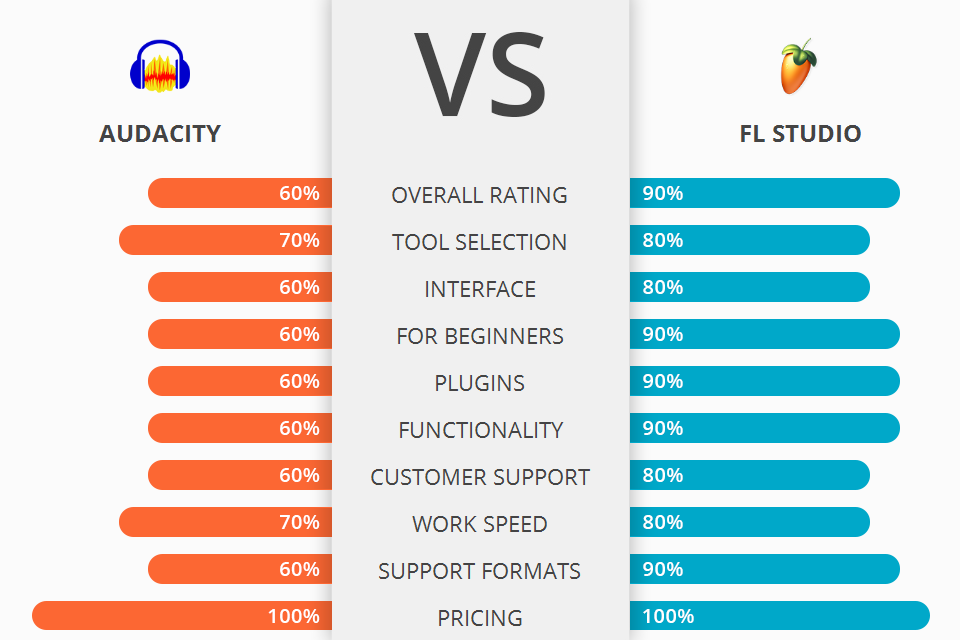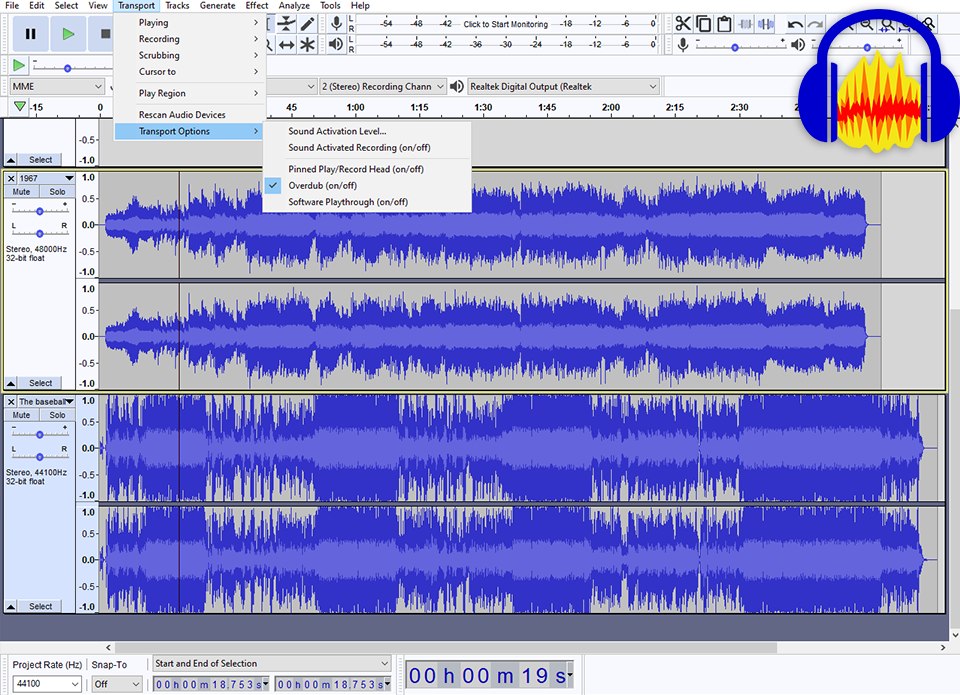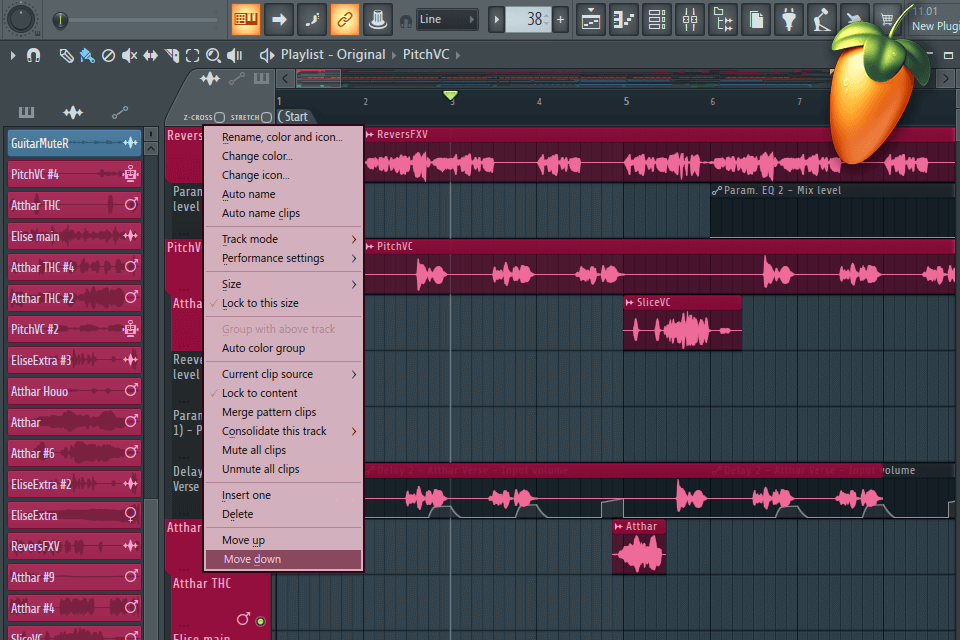
Love to record singles and create music from scratch using advanced third-party plug-ins? Read this review covering Audacity vs FL Studio rivalry and choose the best audio editor for your needs.
Audacity is free software that allows the users to edit and record audio clips for free. It has cross-browser compatibility and also supports several libraries and plugins for increased functionality. It runs smoothly on Mac, Windows OS.
FL Studio is an open-source audio workstation (DAW). FL Studio features a Graphical user interface with a simple pattern-based music sequencing utility. Like most DAWs, it is based on an idea of composing 'in-the-classroom', where the artist can set up his/her computer in a comfortable room in the home or anywhere for that matter and let the software do the work for him/her in real time.
FL Studio has a unique audio engine known as Gstreamer which allows it to be integrated with other audio plugins. There are many popular plugins available for use with FL Studio, such as Omap Editor, Gainressor, Phaser, Fruity Loops, and more.
FL Studio Features:

It is capable of conducting audio file transformations such as: rename, rewind, fast-forward, skip forwards/backwards, adjust bass, treble, etc. When used Audacity it is possible to apply various types of filters to an audio file. Additionally, it includes tools for creating and modifying ring tones and sounds, effects like fades and compression, text effects, and also a large variety of effects.
Aside from its great functionality, what is most admirable about Audacity is the fact that it can be used as a simple recording studio, what is more, it is capable of running as a complete music sequencer, virtual recording studio, and audio editing software all in one.
Its powerful recording engine, multi-track recording support, feature-rich interface, and a wide range of audio formats such as MP3, WAV, OGG, FLAC, etc., give it the edge over other traditional audio recording software. You can record audio tracks of any length with it, even though the software allows you to record up to two hours of audio tracks at a time; this is possible because of the powerful and robust recording engine built into the software.

The FL Studio 3.5 version includes new features that make it even easier to produce great audio tracks, even for people who are not used to programming. New functions such as the arpeggiator have been added to the Mixer tab, allowing you to specify how you want your audio to sound when it is played back using an instrument.
Another great feature of this version is the inclusion of over 120 sounds that can be loaded directly into the FL Studio instrument template. In addition, the MIDI import function allows one to connect external MIDI keyboards, microphones and other audio devices. Other new features include the ability to edit the sounds directly from the recording interface, the ability to display and save custom tracks/movies and an extensive library of audio loops, all of which can be instantly pulled into the template.
The Audio Effects Processing tab features four basic types of processing engines that are included with the FL Studio software: Arbitray Valve, Wavetable synthesis, sample playback, and the classic compressor/decompressor. The Arbitray Valve is perhaps the most popular component of the FL Studio interface, allowing for the adjustment and limiting of different audio parameters in a number of musical instruments.


| STARTING PRICE | FREE | FREE |
| FREE TRIAL |
| WINDOWS | ||
| MAC | ||
| LINUX | ||
| iOS | ||
| ANDROID |
| LIVE SUPPORT | ||
| PHONE | ||
| CHAT SUPPORT |